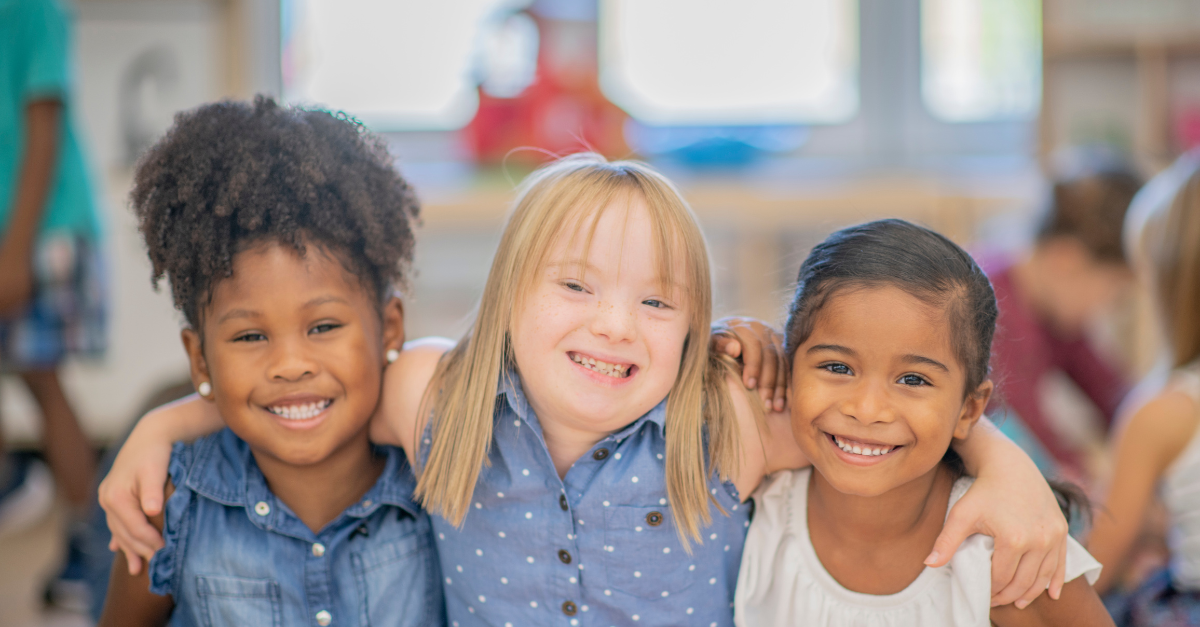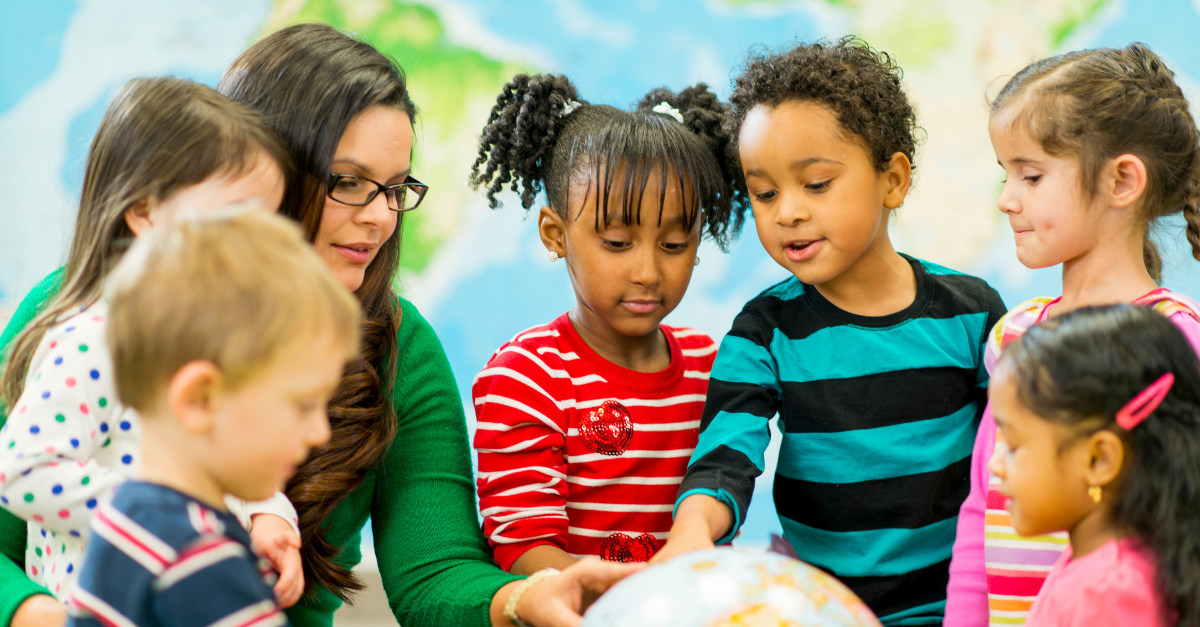Creating inclusive learning environments and empowering young children
Educators working in classrooms with young children are uniquely positioned to foster inclusive learning environments that will build the foundations for how those children naturally embrace and encourage inclusivity throughout their lives. The concept begins with educators teaching inclusivity and creating an inclusive environment, ultimately shaping children who will carry these lessons forward in life.
Each child care provider plays a pivotal role in shaping the future of young minds, laying the groundwork for a lifetime of inclusivity and empowerment. As we delve into the crucial sphere of creating inclusive learning environments, the focus extends beyond the classroom and also encompasses the professional development of child care providers. The landscape of early childhood education is intricately woven with the threads of professional growth, and at its core lies the commitment to empower child care providers with the tools and insights needed to cultivate inclusive spaces.

In this blog, we navigate the landscape of early childhood development and its connection to professional development, we explore the symbiotic relationship between educators, child development associates, and the young learners they guide. We will unravel the layers of creating inclusive environments – from professional development for child care providers to the overarching realm of high-quality child care programs – and how they both play a crucial role in fostering a community of learning that is truly empowering for all involved.
The why.
Fostering an inclusive environment not only shapes positive attitudes toward school for young children but also serves as a cornerstone for imparting crucial life skills such as empathy, self care and compassion (Better Kid Care, 2022). As educators embark on the journey of creating inclusive spaces, it becomes imperative to embrace ongoing professional development opportunities. The landscape of early childhood professional development is intricately tied to the growth of the early childhood workforce, which includes all childcare professionals, child development associates, and childcare providers. Acknowledging the significance of required training hours and continuing education in the early childhood field, teachers will find themselves equipped to venture beyond their comfort zones to support and welcome all children.

The role of childcare professionals is paramount in shaping an inclusive learning environment. Professional development in the early childhood field is not merely a set of mandatory tasks; rather, it becomes a dynamic process of growth and adaptation. By understanding the diversity within the families present in the classroom, educators can forge deeper and more meaningful connections. This, in turn, paves the way for increased engagement not only with families but also with the broader community. Involving the local community becomes a vital aspect of the inclusive journey, extending the impact beyond the classroom walls. In this holistic approach to early childhood education, professional development becomes a catalyst for change, fostering an inclusive environment that resonates far beyond the immediate educational setting and into the lives of the children, families, and communities involved.
Now we can bring in the how!
In my preschool classroom we loved to involve our community by:
Using menus from local restaurants in dramatic play,
Sourcing establishments that also foster inclusive spaces and creating a resource guide for families.
Inviting community leaders of different abilities and backgrounds to participate in a group activity or special event as a form of inclusive enrichment.
I once had a parent of a child in my classroom come in and make Diya’s with the children as she taught them about the traditions of Diwali. We also had a local train enthusiast bring a model train into the preschool room and teach the children about trains and movement.

Thinking of the physical space, the National Association for the Education of Young Children (NAEYC) -the world’s largest organization of early childhood professionals- outlined 3 different types of modifications for a classroom environment to promote inclusivity.
Classroom modifications for inclusivity from NAEYC
Physical modifications are alterations to the environment, such as a selection of seating options, arrangement of furniture, material selection and distribution in the environment, classroom-wide visual supports, and lighting.
Social modifications are planned interactions among children, such as social scripts to support communication and problem solving, use of “buddy” systems, and reinforcement of specific social skills that encourage a sense of belonging and meaningful friendships.
Temporal modifications are adjustments made in the timing of routines and activities, such as ensuring the daily schedule is balanced in teacher- and child-directed experiences, activity level, and group size; altering the length of a routine; and using cues such as minute warnings and timers for transitions or environmental changes.” (Rausch et al, 2021)
Next is Application.
Think about the physical space of your class, in fact, physically enter that space and explore it from the level of a child in your class, what can you see, feel, hear? Now how could you modify each of those elements based on the needs, cultures, and experiences of the children in that space? From the perspective of each child in your class ask yourself do you feel like this room expected you to arrive?

With a space that expects each child and promotes growth and learning opportunities equally across the diverse needs of the class, children can find that spark and be empowered to learn. When a space has physical, temporal, or spatial blockers for a child they are also blocked from growth, because instead of focusing on learning they have to first remove the blockers in their way to access the same space that expected the other children in the class. Expecting them allows them to explore their abilities safely and with the same access as every other child. A child should look around the space and see a reflection of themselves and their family.
Creating an inclusive and nurturing environment for children is a fundamental aspect of high quality childcare. A qualified staff, equipped with a child development associate certification, plays a pivotal role in fostering an atmosphere that facilitates learning for every child. Child care professionals with essential knowledge in child development are better equipped to understand and address the diverse needs of the children in their care. Continual professional development through continuing education ensures that child care providers stay abreast of the latest research and best practices, enabling them to offer high-quality services.
Furthermore, family services are integral to creating a supportive ecosystem around the child. By involving families in the educational process, child care providers can build a bridge between the learning environment and the child’s home. This collaborative approach strengthens the child’s sense of belonging and connection. In this context, career goals for a child care professional extend beyond individual achievement to encompass the holistic development of the children in their care.
Ultimately, a child care provider’s commitment to removing any physical, temporal, or spatial blockers ensures that each child has equal access to learning opportunities. This approach not only fosters a sense of equality but also empowers children to explore their abilities safely. As children look around their learning space, they should see a reflection of themselves and their families, fostering a sense of identity and belonging. By embracing these principles, child care providers can contribute significantly to the overall well-being and development of the children they serve.
To empower a child is to expect them.
To support children and families in managing separation anxiety, browse our professional development platform Lillio Academy, for certified training sessions across the North America.


Kayla is a mother to a toddler and was born and raised in Toronto, Ontario. She entered into the child care space at a young age; first, as a volunteer at before and after school programs, and then as a youth mentor, tutor, and reading buddy at various organizations. Kayla went on to receive her Bachelor of Arts Honours In Drama and Criminology from the University of Windsor in 2013. She then reentered the child care space as an assistant director of a school age program and later as a preschool teacher. In 2018 Kayla returned to school and achieved a 4.0 in the Master of Education program at OISE, University of Toronto. Kayla studied Curriculum Studies & Teacher Development with emphasis in Arts in Education, STEM Education, and Critical Pedagogy (focus on anti-oppressive approaches to education). Kayla has helped organize conferences such As the AAACS (American Association for the Advancement of Curriculum Studies) and has now joined the Lillio team and helps support educators with relevant & applicable professional development content.
More by Kayla

Kayla Warburton
February 9th, 2024
5 mins
Related Articles

Preparing your Childcare Summer Camp Program
April 16th, 2025 | Maddie Hutchison
